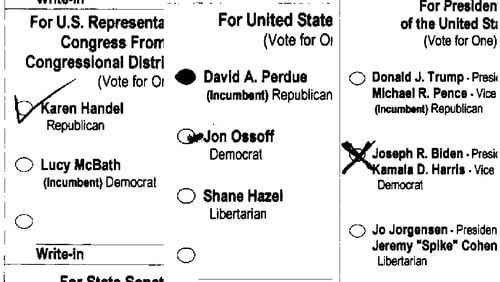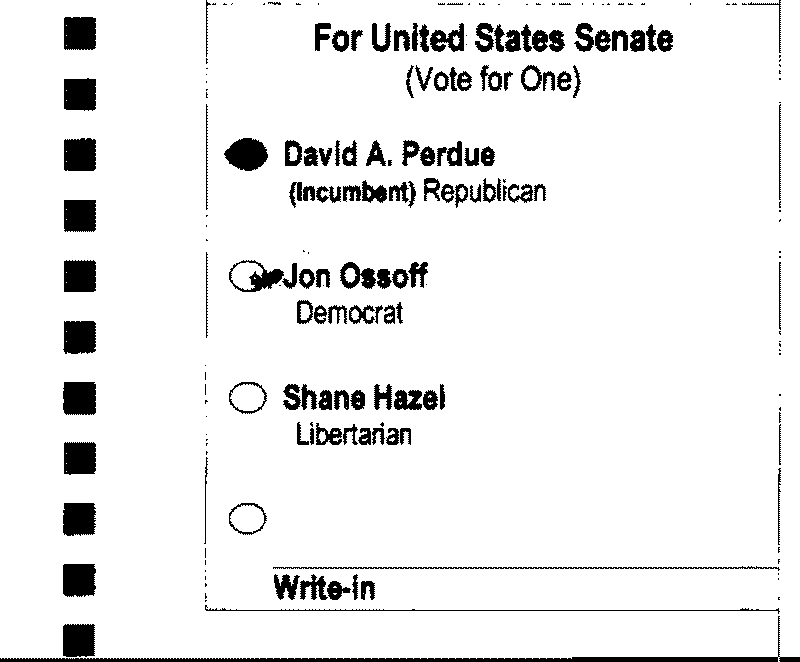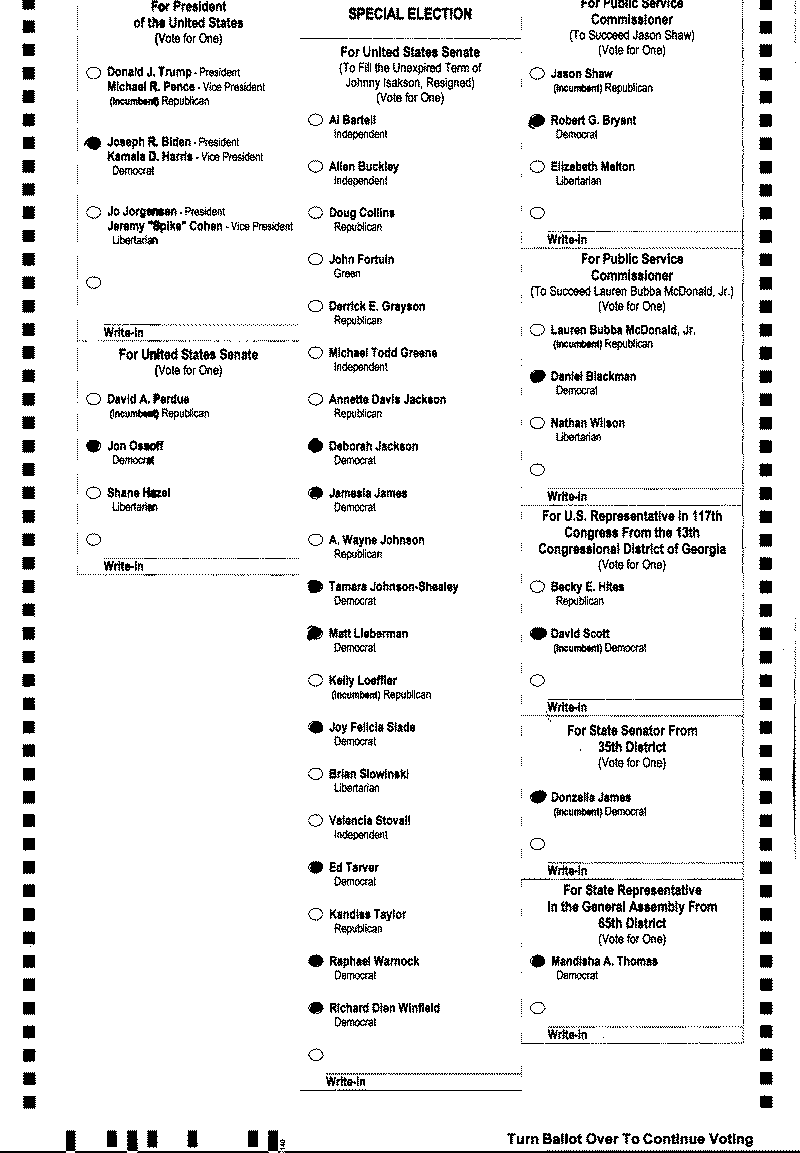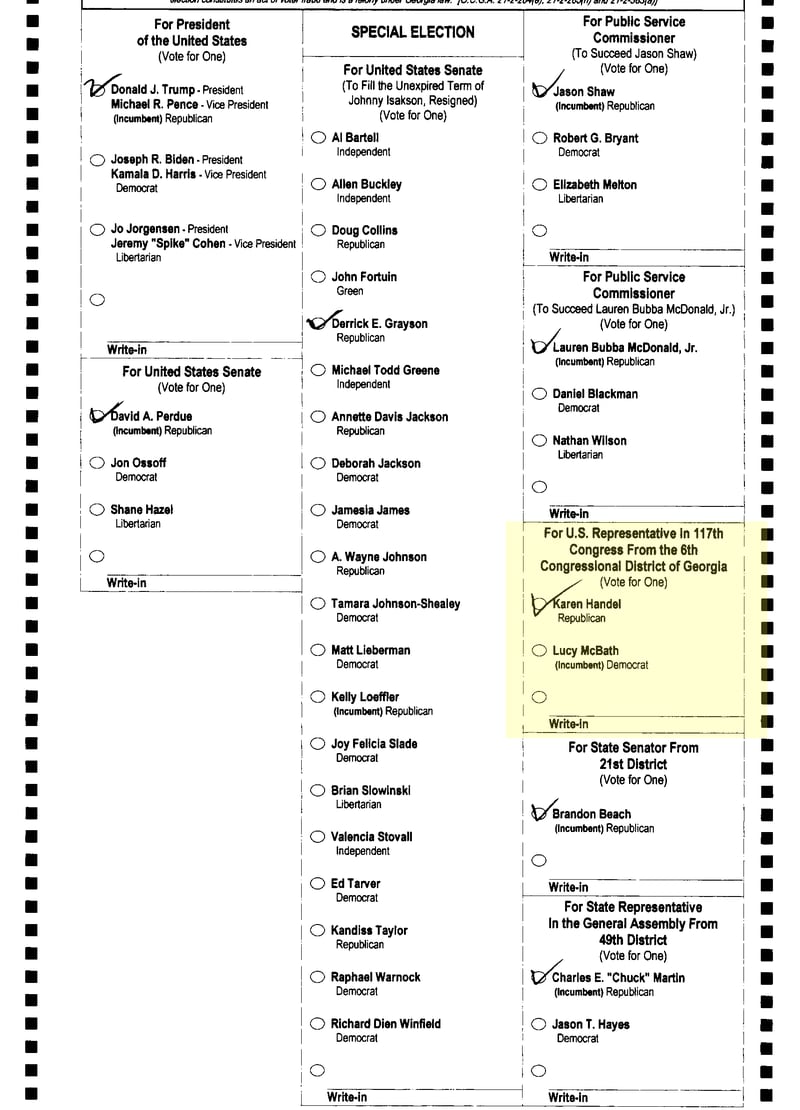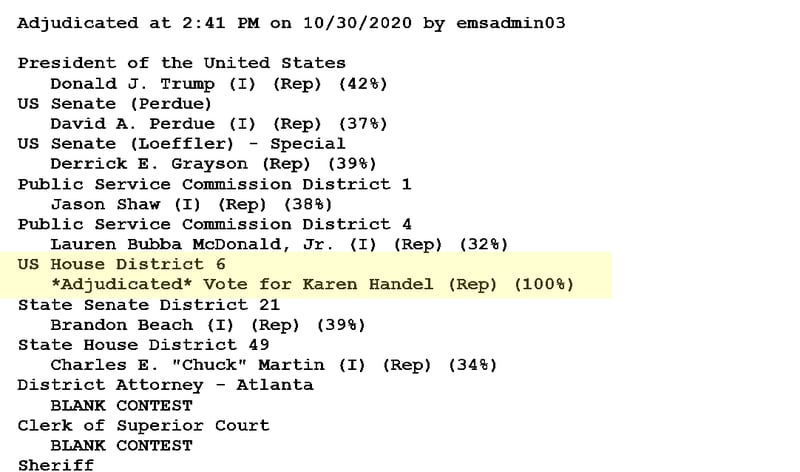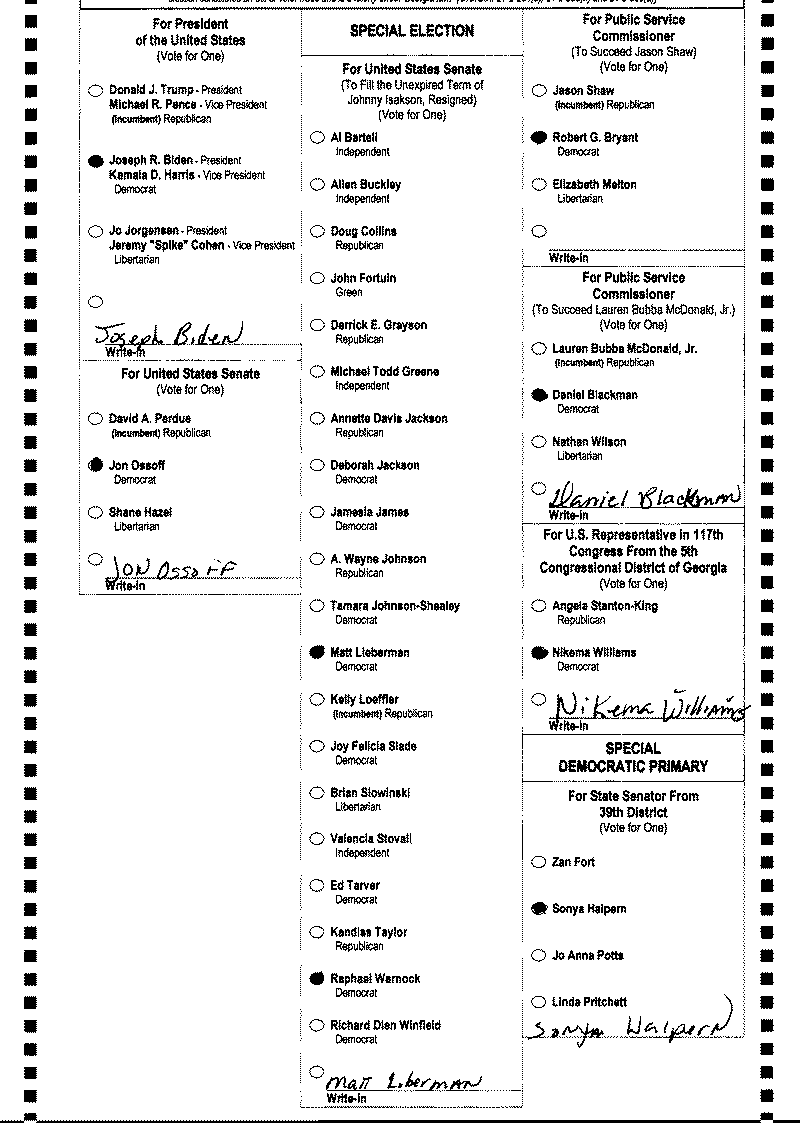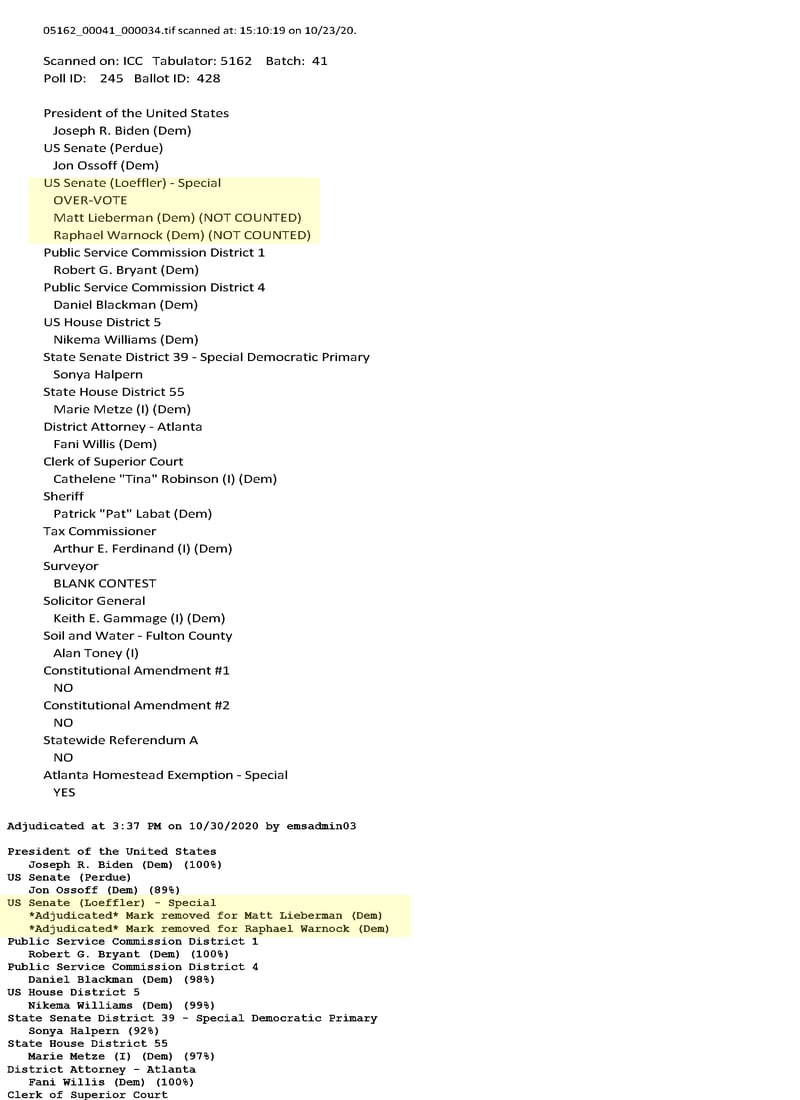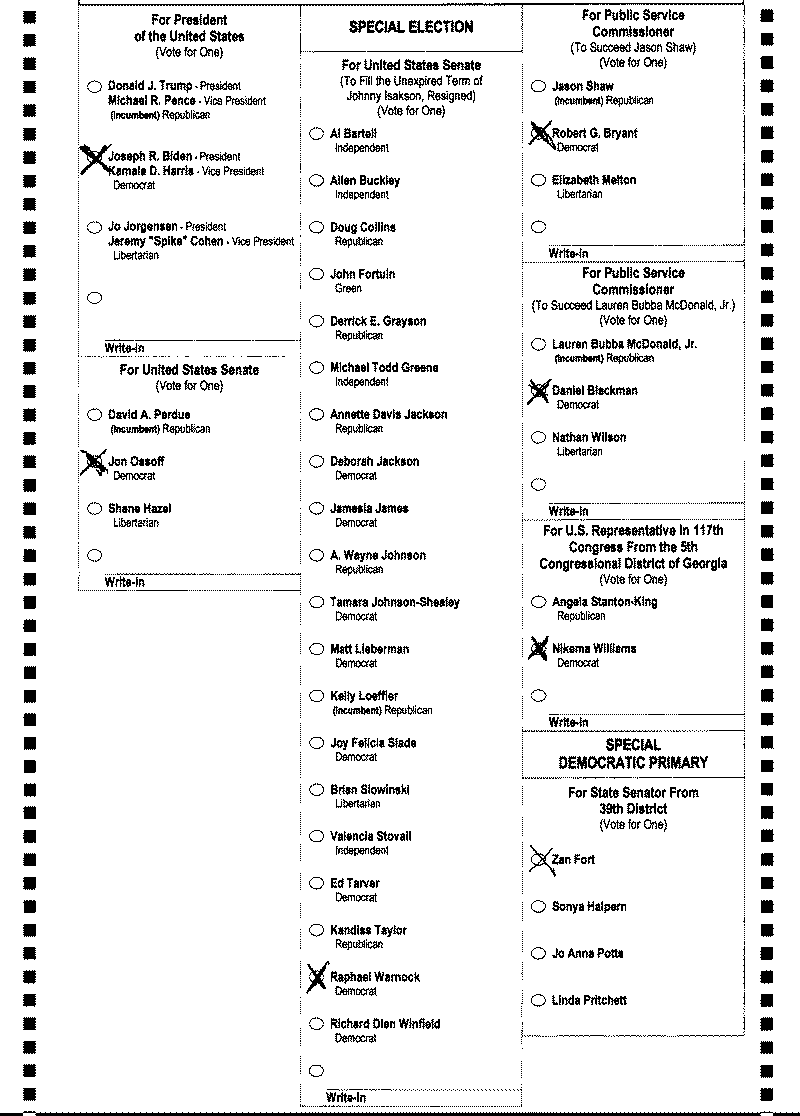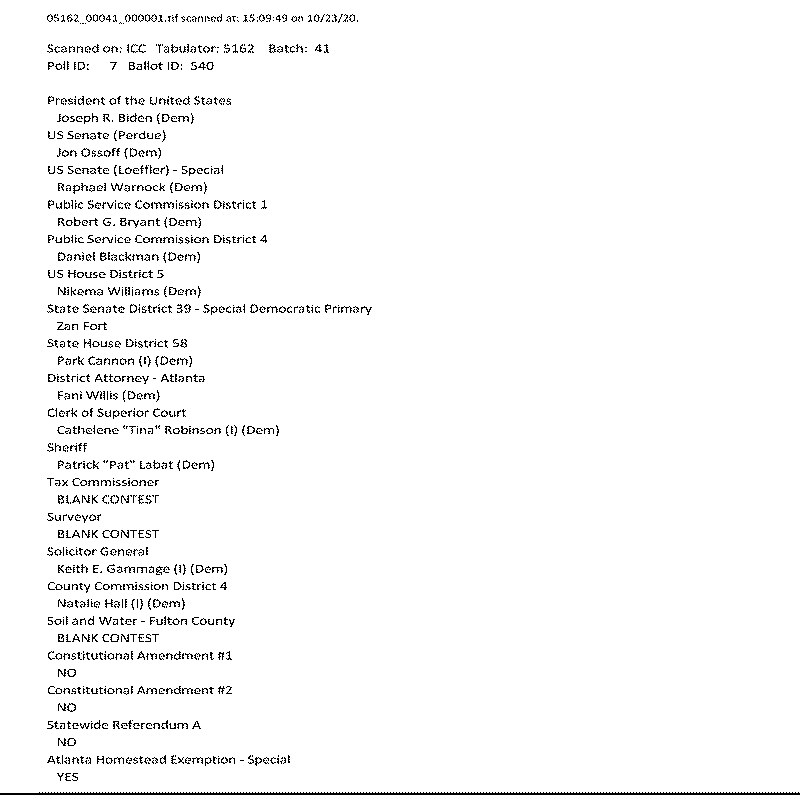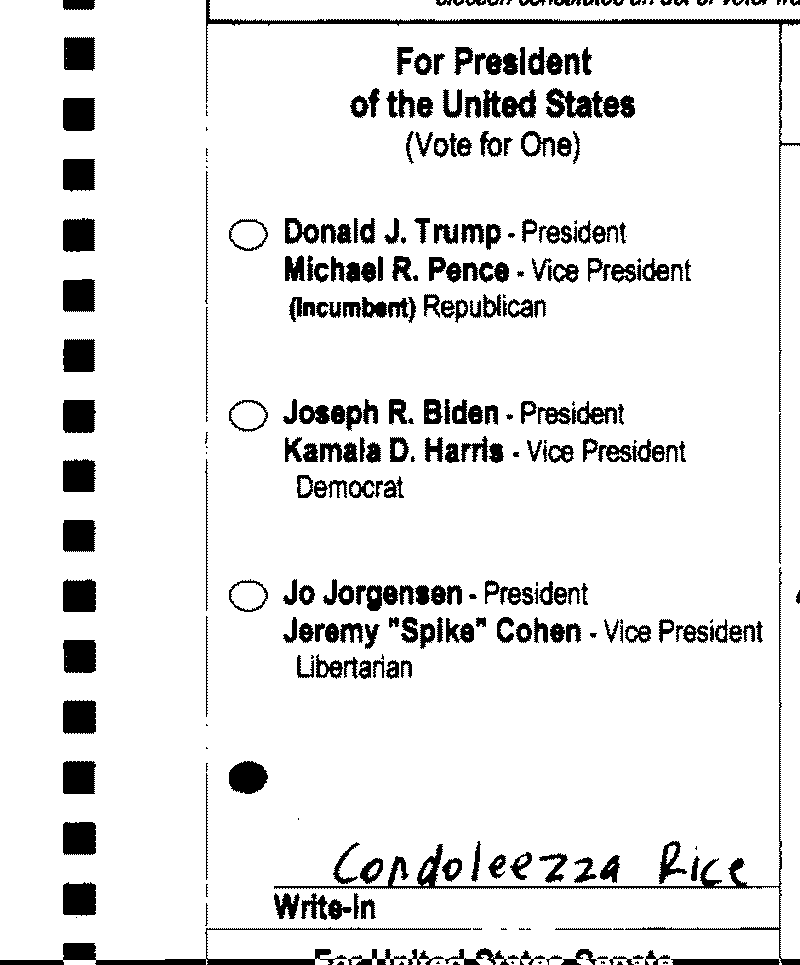There are precise instructions on how to fill out an absentee ballot, from the color ink to use — black or blue but definitely not red — to how to choose candidates by filling the oval without checks or X marks.
That doesn’t mean every voter follows the guidelines.
In most cases, the markings are close enough for Georgia’s machines to scan and count. In others, a bipartisan team of humans examined ballots and made a ruling.
After ballot images were classified as public records, The Atlanta Journal-Constitution obtained complete scans of 145,000 Fulton County absentee ballots cast in November’s election for a $240 records retrieval fee to the county. The ballots show the different ways voters filled out the forms, how the computers read them and how a bipartisan group of humans counted them.
Here are some excerpts of ballots with imperfect marks and their rulings.
Ambiguous vote
One voter filled in the bubble for Republican David Perdue completely but also had a smaller mark for his Democratic opponent, Jon Ossoff.
The vote was initially flagged as ambiguous but counted for Perdue after a review.
PDF: View the complete ballot and ruling
Overvote
A Democratic-leaning voter filled in the bubble for all eight Democrats running in the U.S. Senate special election for the seat Republican Kelly Loeffler held at the time.
The votes were flagged as overvotes and none of them counted.
PDF: View the complete ballot and ruling
Blank vote
A voter used check marks to select candidates. In most races, the ballot scanners picked up enough markings to judge the voter’s intent. But in the 6th Congressional District race, the check mark appeared to miss most of the bubble. The computer scanner labeled it blank.
The ballot was examined by humans and ruled as a vote for Republican Karen Handel.
PDF: View the complete ballot and ruling
Added write-ins
One voter added the name of the candidates to the name for write-ins. The voter also bubbled in two candidates for the U.S. Senate special election and added one of those names to the write-in line.
The U.S. Senate special election votes were ruled overvotes and not counted.
PDF: View the complete ballot and ruling
X marks
A voter used X’s to mark preferred candidates.
The scanning machine was able to read the marks and count the votes, and no human review was required.
PDF: View the complete ballot and ruling
Write-in
A voter filled in former U.S. Secretary of State Condoleezza Rice as the choice for president.
The ballot was ruled as a write-in vote, but Georgia law only counts write-in votes for candidates who file paperwork in advance. Rice was not a certified write-in candidate.
PDF: View the complete ballot and ruling

